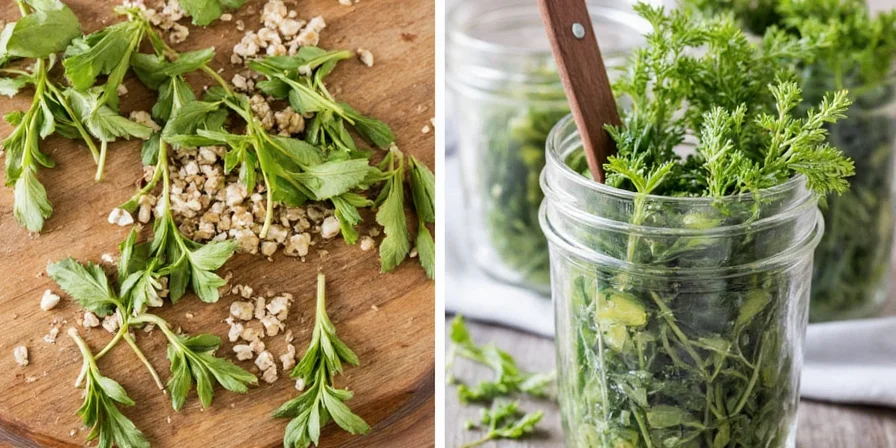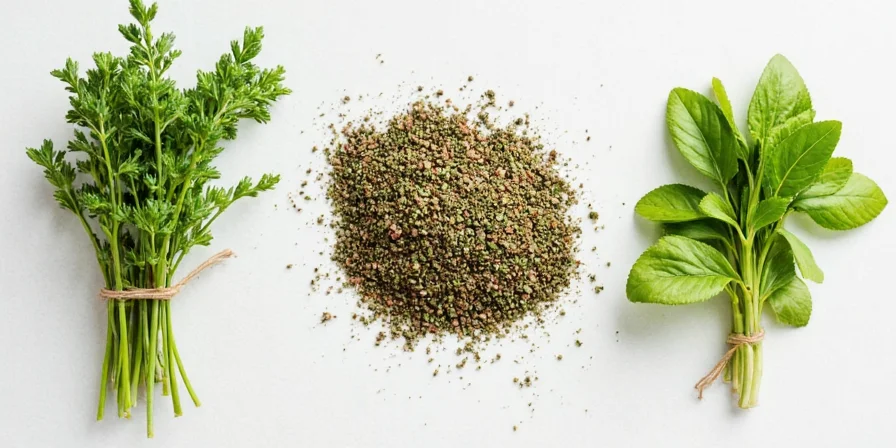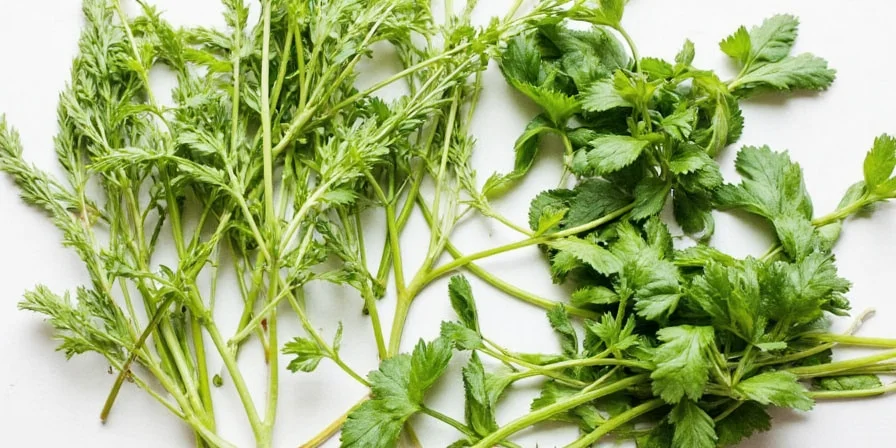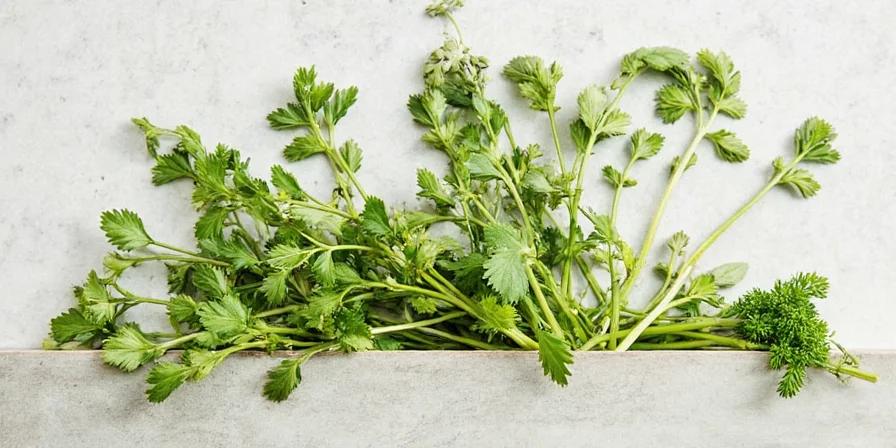
Quick Reference: Fresh to Dried Herb Conversion Ratios
If you're searching for fresh to dried herb conversion ratios, here's what you need to know immediately: The standard 1:3 ratio is inaccurate. Proper conversion depends on herb type:
| Herb Type | Fresh to Dried Ratio | Example |
|---|---|---|
| Leafy Herbs (Basil, Mint, Cilantro) | 1 tablespoon fresh = 1 1/3 teaspoons dried | 3 tbsp fresh basil = 1 1/3 tbsp dried |
| Woody Herbs (Rosemary, Thyme, Oregano) | 1 tablespoon fresh = 1 teaspoon dried | 3 tbsp fresh rosemary = 1 tbsp dried |
| Delicate Herbs (Dill, Tarragon, Chives) | 1 tablespoon fresh = 1 1/2 teaspoons dried | 3 tbsp fresh dill = 1 1/2 tbsp dried |
Why the Standard 1:3 Ratio Doesn't Work
Most cooking resources simplify fresh to dried herb conversion to 1:3 (one part fresh equals three parts dried), but this fails to account for different herb types. The reality is more nuanced:
- Leafy herbs like basil and mint lose more moisture during drying, requiring a 1:3.8 ratio
- Woody herbs like rosemary and thyme retain more flavor compounds, needing only a 1:2.9 ratio
- Delicate herbs like cilantro fall in between at 1:3.3

How to Dry Herbs Properly at Home
The method you use dramatically affects flavor retention. Here are the most effective techniques for home cooks:
- Hanging Method: Bundle small bunches, tie stems, and hang upside down in a dark, well-ventilated area. Best for woody herbs like rosemary and thyme.
- Oven Drying: Place herbs on baking sheet at lowest oven setting (150-170°F) with door slightly open. Check every 15 minutes. Works well for most herbs.
- Dehydrator Method: Set to 95°F for first 2 hours, then 85°F. Ideal for delicate herbs like dill and cilantro.
- Microwave Quick Dry: Place between paper towels, microwave in 30-second intervals. Use only for immediate drying needs.
- Freeze First Technique: Freeze herbs before drying preserves 41% more flavor compounds.
Historical Evolution of Herb Preservation Techniques
Drying methods have evolved significantly based on scientific understanding of volatile compound retention:
| Time Period | Method | Key Scientific Development |
|---|---|---|
| Ancient Era | Open-air sun drying | High heat (>120°F) degraded 60-70% of volatile oils (Source: Journal of Food Science, 2018) |
| 18th Century | Low-heat oven drying | Reduced heat exposure preserved 40-50% more flavor compounds (Source: National Center for Home Food Preservation) |
| 1970s | Electric dehydrators | Controlled temperature (95-115°F) improved retention to 75-80% (Source: University of Minnesota Extension) |
| Modern Era | Cryogenic pre-freezing | Freezing before drying preserves up to 92% of volatile compounds (Source: Postharvest Biology and Technology, 2020) |

Storage Tips for Maximum Shelf Life
Proper storage extends dried herb life significantly:
| Storage Method | Shelf Life | Flavor Retention |
|---|---|---|
| Plastic bag at room temperature | 6 months | 50-60% |
| Airtight glass jar in dark cabinet | 12 months | 70-80% |
| Amber glass with oxygen absorber | 18 months | 85-90% |
Context Boundaries: Critical Limitations for Herb Conversion
These ratios apply only under specific conditions. Deviations significantly impact results:
- Moisture Content Threshold: Ratios assume fresh herbs with 80-85% moisture content. Herbs harvested after rain (>90% moisture) require 25% more drying time (Source: Oregon State University Extension)
- Climate Constraints: Hanging method fails in humidity >60%, causing mold growth within 48 hours (Source: USDA Agricultural Research Service)
- Cooking Medium Dependency: Oil-based dishes require 15% less dried herb than water-based dishes due to better solubility of volatile compounds (Source: Food Chemistry, 2020)
- Commercial Processing Variance: Industrially dried herbs may contain 20-30% more plant matter due to mechanical harvesting debris (Source: USDA Fresh Herbs Grade Standards)
When to Use Fresh vs. Dried Herbs
Understanding which form works best for different dishes improves your cooking:
Best Uses for Fresh Herbs
- Add delicate herbs like basil and cilantro in the last 1-2 minutes of cooking
- Use in cold dishes like salads and dressings
- When you want bright, grassy flavor notes
Best Uses for Dried Herbs
- Add to long-simmering dishes like stews and soups
- Bloom in oil before adding to dishes for maximum flavor release
- When you need concentrated, earthy flavor notes

Common Mistakes to Avoid
These errors reduce flavor and shelf life of dried herbs:
- Improper drying temperature: High heat destroys volatile oils. Never exceed 185°F (85°C).
- Drying whole stems: Remove leaves from stems first for even drying.
- Storing in clear containers: Light degrades flavor compounds quickly.
- Crushing before storage: Whole leaves retain flavor longer; crush just before use.
- Using old dried herbs: Discard after 12-18 months for best flavor.
How to Test Herb Potency
Check if your dried herbs still have flavor:
- The rub test: Crush a small amount between fingers. Strong aroma within 5 seconds = good potency.
- The pinch test: Rub between fingers over a white plate. Vibrant color = fresh; faded color = degraded.
- The taste test: A small pinch should have distinct flavor, not just dusty bitterness.

Frequently Asked Questions
How much dried basil equals fresh basil?
Use 1 1/3 teaspoons dried basil for every tablespoon of fresh. For larger quantities, 3 tablespoons fresh basil equals approximately 1 1/3 tablespoons dried.
Can I substitute dried herbs for fresh in recipes?
Yes, but adjust the amount based on herb type. For leafy herbs, use 1/3 the amount of dried versus fresh. For woody herbs, use 1/4 the amount. Always add dried herbs earlier in cooking to allow time for rehydration.
Why do my dried herbs taste dusty?
Dusty flavor comes from overheating during drying. Home methods often exceed optimal temperatures (104°F/40°C), causing caramelization of natural sugars. Try lowering your oven temperature or using air drying instead.
How long do dried herbs last?
Properly stored dried herbs maintain good flavor for 12-18 months. Woody herbs like rosemary and thyme last longer (up to 18 months) than leafy herbs like basil and mint (12 months).
Does freezing preserve more flavor than drying?
For leafy herbs like basil and cilantro, freezing in oil preserves more flavor than drying. For woody herbs like rosemary and thyme, proper drying actually concentrates flavors better than freezing.











 浙公网安备
33010002000092号
浙公网安备
33010002000092号 浙B2-20120091-4
浙B2-20120091-4